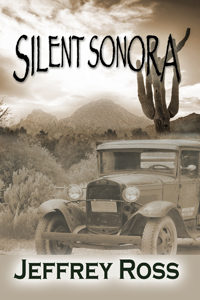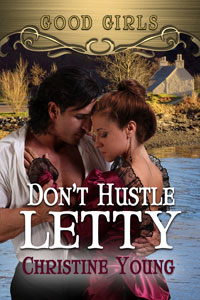Silent Sonora: #Life #History
Silent Sonora is a life history centered in depression era Scottsdale, Arizona. A tent-dwelling family’s struggles, aspirations, tragedies, and triumphs–are revealed.
Silent Sonora: Life/History

Buy at: Amazon, Barnes and Noble
BLURB: Silent Sonora
Silent Sonora details the life of a heroic young girl, Lillian Carroll, whose family resides in two tents during the 1920’s and 1930’s. Set in depression-era Scottsdale Arizona, the book reveals Lillian’s daily life experiences, the family’s struggles, and her quest for a better life through education. Lillian tells readers directly about tent life, the local “emerging” Arizona communities, and the ongoing hardships she and her family confront. Both of Lillian’s parents are deaf—her father works in the local agricultural industry, while her strong-willed mother endeavors to make the best home she can for her children. Lillian admits that “life was tough,” but assures us she and her family had good times, too. Ultimately, Lillian’s desire for a better education helps her situation—her love of family and strong faith give her the support she needs to finally gain independence.
REVIEW: Silent Sonora
Silent Sonora by
Jeffrey Ross
4 Stars
Review by C. L. Kraemer
Mr. Ross has honored the narrator of these recollections from the Depression by leaving the text just as it was presented to him. I felt as if I were sitting with an aunt who answered my questions without hesitation and didn’t sugar coat any aspect of those times.
This was a fascinating read and should be required of all history students. Real life memories give a better perspective of the situation than novels, however brilliant.
Bravo, Mr. Ross.
EXCERPT: Silent Sonora
The Tent Household
About 1930, we were living in two tents, a twenty foot by twenty foot tent, and a sixteen foot by sixteen foot tent. Dad always put our dwellings up in a road’s right-of-way or else worked out an appropriate arrangement with a property owner, like Charles Miller. Mom and dad never paid any rent to set up our tents.
The tents had poles inside to provide support, and both tents had flaps and screened places to let in fresh air. A smokestack stuck through the roof of the larger tent to allow cook stove smoke out. Our tents had been coated with a chemical to make them waterproof. Living in tents was rather primitive, as you might expect.
Our tents were connected by a kind of patio covering my dad created. This covering was quite large, about twelve feet in length. We would sit under the cover to be comfortable. When company came, we would always sit out there. One tent, the smaller one, had the kitchen, the kitchen table, and a small cot for my oldest brother. The table was about nine feet long. Dad made this table much like a big picnic table, with nice benches on each side. The rest of our beds were located in the larger tent.
Early on, when were very little, we’d have to sleep four or five in a bed. We slept in a big double bed. One time, I didn’t know it, but I had rolled down the far side to the floor. Nellie was hollering for covers because she was cold. I had tangled all the covers with me on the floor. Jim woke me up and said, “Hey, get up, you’ve taken all the covers.” John, Clifford, Bill, and Nellie and I were sleeping together that night. Quite a crowd.
We had a back house, a big building, with an outhouse attached. We were the only people living in tents at the time, and our family was often ridiculed for our way of life.
Dad built a “portable” wooden floor for the kitchen area. Whenever we moved and set up the tent, he would water down the dirt area under the floor so the surface stayed hard and dry.
We didn’t have any inside plumbing, and we didn’t have a shower hook-up. I guess my Grandfather Birchett, my mother’s father, was very clean. He would always come home and put on fresh clothes before he sat at the table. But not this Carroll bunch. The boys and my father took a bath about once a week. They would use a big washtub with a little hot water and P & G soap. Grandpa took his baths downtown. I don’t think I ever saw him bathing in the big tub by the tent.
But remember, times were tough in the 1920’s and 1930’s. WW II, a few years later, significantly changed the way we all lived.
We didn’t mind the cold in the wintertime because the cook stove kept us warm.
But during the summer, we would often place damp sheets over us at night so we could sleep. And we tried to sleep outside. We always cooked outside in summer.
We lived in those tents for a couple of years, actually for several years, as we moved back and forth between Laveen and Scottsdale.
Later, dad built a trailer with two beds: one for my mother and youngest brother, and the other for Nellie and me.
Those homemade trailers made us look like gypsies. Ha. One time a group of “real” gypsies stopped by and dad ran them off. Do you find a bit of irony or humor in this gypsy story?
Years later, when we resided in a tin-roofed house north of Scottsdale, our dwelling still had sheds and trailers connected. My room was in a trailer. Even then, we lived so far north of Indian Bend, about a mile, that we didn’t have electricity for a long time
Living in the Tent
What was it like living in that tent? Well, tent life was tough, but it wasn’t so bad. Early in the mornings, my mother would get up and cook breakfast, typically fried potatoes, biscuits, and gravy. My father and Jim would drink coffee. I don’t think anybody else liked coffee. Occasionally, mother would make oatmeal. I never became fond of oatmeal, and I don’t like oatmeal today, either. She had those enameled dishes. Mom had pots made from same material. The coating wasn’t tin, so you had to be careful to avoid chipping. We had forks, knives, and spoons, and those tin cups common to the time. Mother also had big cast iron pots and skillets she used for cooking. We’d use heated water and P & G soap to do dishes. Mom had a big washtub for soaking and cleaning all the dirty utensils, plates, and pans. We always seemed to have dishrags nearby.
My father fabricated a nice cabinet for her dishes, and his creation sure was a nice piece of furniture until wearing out.
Additionally, she had a spatula, a can opener, and lots of wooden kitchen matches. We depended on matches.
Once, later, a small fire started out at the Douross house we were living in because mice bit into the matches, which were stored in an uncovered bowl. The place would have burned down if mom hadn’t noticed and quickly put out the fire. Mom kept the bowl covered after the fire. By the way, revenge was sweet. We made war on those mice and did quite a bit of damage to them.
We depended on kerosene for light. At times, we’d get ice, but we didn’t have a regular icebox. Do you know how mom kept her eggs and butter cold? She had lard buckets covered with wool. Mom would put eggs in the buckets, cover them with wool, and wet the wool. Evaporation would keep the eggs, or whatever she put in the bucket, cool and reasonably fresh. I don’t believe she had a refrigerator until my brothers came home from the war in 1945 or 1946. Of course, we didn’t need to keep our milk cold. We didn’t get milk very often, and when we did, the ten or so kids at home would drink it up rapidly.




Welcome to my blog